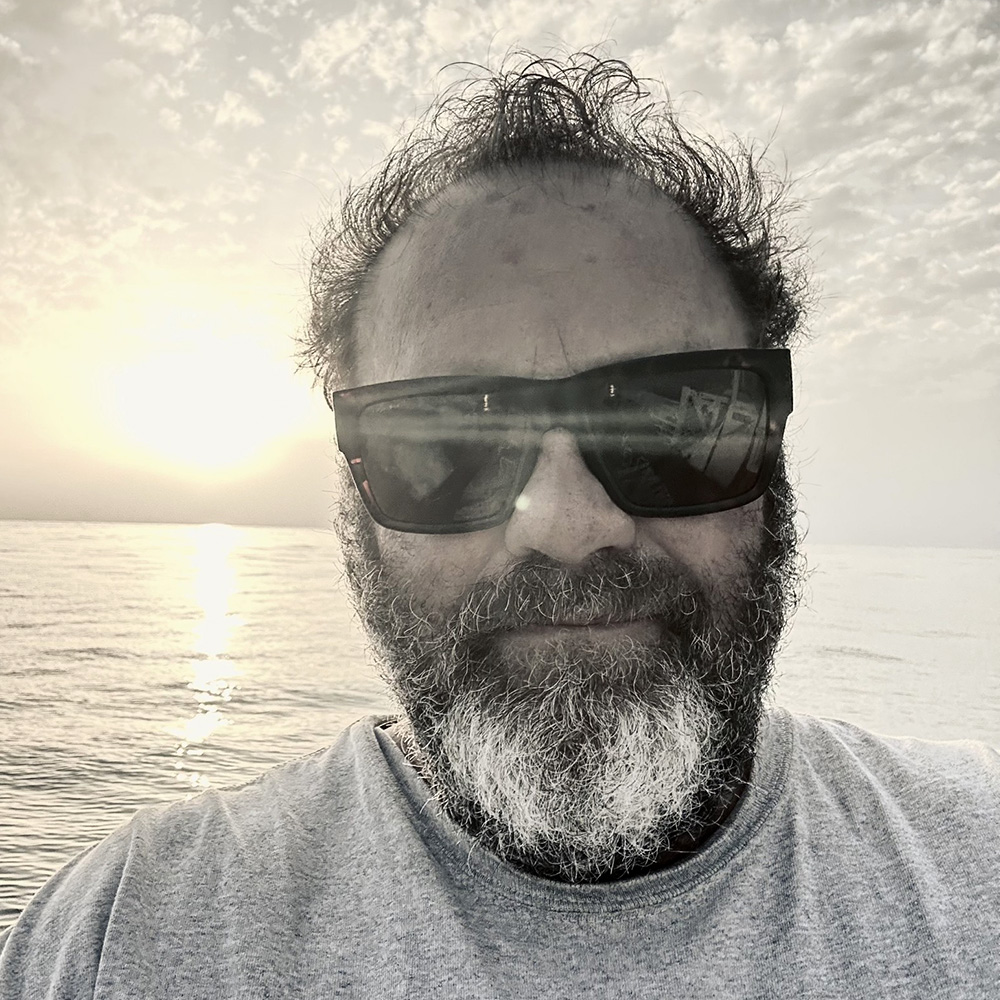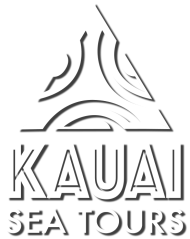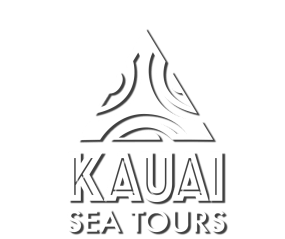Kauai by the Numbers: Island Dimensions That Matter

At Kauai Sea Tours, we view the island through both a local’s perspective and a navigator’s viewpoint. Every fact — from the island’s square miles to the height of its cliffs and the depth of its surrounding waters — tells a story about Kauai’s character, history, and beauty.
For many years, our captains and crew have guided guests along Kauai’s rugged coastlines, sharing insights that can only come from years spent on these waters. The island’s scale and features are more than facts on a map — they define how we explore, how we protect, and how we connect with this incredible place.
This is Kauai by the numbers — a closer look at the dimensions that make the Garden Isle one of the most beautiful destinations on Earth.
How Big Is Kauai? The Real Size of Paradise
Kauai covers approximately 552 square miles, making it the fourth-largest island in the Hawaiian chain. It’s roughly circular, measuring about 33 miles wide and 25 miles long. Despite its modest size, Kauai offers an astonishing range of landscapes — tropical beaches, misty rainforests, fertile valleys, and towering cliffs — all within close proximity of one another.
Because much of Kauai remains untouched by roads, more than 70% of the island is accessible only by sea, air, or foot. This natural limitation has helped preserve its wild and pristine charm, giving every visit a sense of discovery. The geography of Kauai is such a unique result of its volcanic origins.
Kauai’s Square Miles and Dimensions
Kauai spans roughly 552 square miles of lush landscapes — from pristine beaches to peaks rising over 5,000 feet. Its near-perfect circular shape creates a compact yet incredibly diverse island where every mile feels distinct and alive.
Kauai’s Coastline Length
Encircling the island are nearly 90 miles of dramatic coastline, a mix of soft-sand beaches, rugged cliffs, and secluded coves. This stretch defines Kauai’s character and provides endless opportunities for adventure by sea.
Comparing Kauai to Other Hawaiian Islands
To put it in perspective:
- Oʻahu: ~597 square miles
- Maui: ~727 square miles
- Hawaiʻi (Big Island): ~4,028 square miles
What Kauai lacks in total area, it more than makes up for in topographical diversity. Each corner of the island offers a different microclimate — a testament to its dramatic geological history.
Highest Points and Elevation
Kauai’s landscape rises dramatically from sea level to some of the highest points in the Hawaiian Islands. The island’s tallest peak, Kawaikini, stands at 5,243 feet, closely followed by Mount Waiʻaleʻale at 5,148 feet — one of the wettest places on Earth. These elevations shape Kauai’s incredible range of climates, from misty highlands and cascading waterfalls to sun-drenched shores, creating the lush, layered beauty that defines the Garden Isle.
90 Miles of Rugged Coastline: The Heartbeat of the Garden Isle
Stretching along the northwest side of the island, the Nā Pali Coast is a 17-mile stretch of soaring sea cliffs, emerald valleys, and hidden waterfalls. The cliffs reach elevations of more than 4,000 feet, making them among the tallest coastal formations in the world.
This region is accessible only by sea, air, or trail — which is why our Nā Pali Coast Tours remain one of the most sought-after ways to experience its grandeur.
Each turn along the coastline reveals a new perspective: sea caves sculpted by time, ancient Hawaiian fishing villages, and pristine beaches untouched by development.
Exploring the South Shore and Poʻipū by Sea
The South Shore offers a contrasting scene — calmer seas, golden beaches, and tranquil bays. Stretching roughly 25 miles, this area includes the popular resort community of Poʻipū and the remote coves of Kipu Kai.
It’s a favorite for snorkeling, hiking, whale watching, and sunset cruises. While the Nā Pali Coast stirs awe, the South Shore inspires serenity.
The Cliffs, the Canyons, and the Heights of Awe
Waimea Canyon: The Grand Canyon of the Pacific
Known as the “Grand Canyon of the Pacific,” Waimea Canyon stretches 14 miles long, one mile wide, and plunges more than 3,600 feet deep. Its layers of red and brown volcanic rock contrast beautifully with the lush green vegetation. The name “Waimea” translates to “reddish water”, a reference to the iron-rich soil that washes into the river after heavy rains, turning its water into a distinctive red hue.
Whenever guests ask what they shouldn’t miss on Kauai, Waimea Canyon is always at the top of the list. After soaking in the panoramic views from the dramatic lookout points, be sure to stop at Kōkeʻe Lodge for a quick bite. Their portuguese bean soup, a hearty local dish, is a longtime favorite in our family. It’s a comforting taste of home after exploring the natural beauty of the islands.
Mount Waiʻaleʻale: One of the Wettest Places on Earth
Rising to 5,148 feet, Mount Waiʻaleʻale sits at Kauai’s center and receives an average of 450 inches of rainfall each year, making it one of the wettest locations on Earth. That rainfall feeds hundreds of waterfalls, creating the lush greenery that earned Kauai its nickname, “The Garden Isle.” From the sea, you can often see the mountain’s cloud-covered summit, a sign of the island’s life-giving rains.
While Waiʻaleʻale is a breathtaking sight, reaching it via the popular “Blue Hole” trail is extremely difficult. This rugged route involves crossing rivers, navigating unmarked paths, and trekking through deep mud. As an alternative, we recommend the Pu’u O Kila lookout as it offers serene panoramic views of the valley. I’ve brought many visiting family members to this lookout, and they’ve been captivated by its beauty.
Mountains and Rainforests
Kauai’s rugged mountains and dense rainforests embody its nickname, “The Garden Isle.” The island’s volcanic peaks, such as Mount Waiʻaleʻale and Kawaikini, capture vast amounts of rainfall, which feed hundreds of streams and waterfalls.
These waters sustain vibrant rainforests filled with native flora and fauna, offering a breathtaking contrast to the island’s drier coastal regions and making Kauai one of the most ecologically diverse islands in Hawaii.
Beaches and Coastline
Encircling the island are roughly 90 miles of beaches and coastline, more than any other Hawaiian island. From the golden sands of Poʻipū to the remote coves of the Nā Pali Coast, each stretch offers its own character and charm. Some beaches are perfect for snorkeling and swimming, while others are untouched and accessible only by boat, showcasing the wild, untamed beauty that defines Kauai’s shores.
Canyons and Valleys
Kauai’s interior is carved by time into deep canyons and lush valleys that reveal the island’s volcanic origins. Waimea Canyon stretches 14 miles and plunges over 3,600 feet, painted in reds and greens that shift with the sunlight.
Nearby, the valleys of Hanalei and Kalalau cradle rivers and taro fields, embodying the island’s balance of raw nature and enduring Hawaiian culture.
Depth and Distance: The Ocean’s Hidden Story
The Depths of Kauai’s Shores
Kauai’s underwater terrain is as dramatic as its cliffs. Just a few miles offshore, the ocean floor drops to depths of nearly 4,000 feet. This steep descent creates a thriving marine environment, attracting dolphins, sea turtles, and countless species of reef fish.
The deep offshore channels also make Kauai’s waters a prime location for seasonal visitors — humpback whales.
The Migration Highway: 3,000 Miles of Whale Journeys
Each winter, humpback whales migrate more than 3,000 miles from Alaska to Hawaii’s warm, protected waters to breed and give birth. From December through April, these majestic creatures can be seen breaching, tail-slapping, and nursing their calves off Kauai’s coast.
It’s a breathtaking reminder of how interconnected Kauai’s ecosystem is with the wider Pacific world.
Our Whale Watching Tours are designed to bring guests close enough to witness these behaviors safely and respectfully.
People and Preservation: The Numbers Behind Sustainability
Kauai welcomes around 1.3 million visitors each year — far fewer than Oʻahu’s six million — yet even this smaller number has a noticeable impact on the island’s delicate ecosystems. Since December 2024, Kauai Sea Tours partnered with 4ocean to actively remove plastic pollution from the ocean, extracting over 1,563 pounds of harmful plastic to date. Our efforts are fueled by an ongoing eco-conscious initiative that turns every tour booking into a meaningful contribution to ocean sustainability.
Frequently Asked Questions
How long does it take to circle Kauai by boat?
While Kauai’s coastline spans about 90 nautical miles, ocean conditions and protected areas mean no tours circle the entire island. Most explore between 15 and 25 miles, focusing on the most scenic and accessible places.
When is the best time to visit the Nā Pali Coast?
The calmest seas and best visibility typically occur between May and September. During winter, ocean conditions can be rougher, though the scenery is just as stunning.
How tall are the cliffs on the Nā Pali Coast?
The sea cliffs rise to more than 4,000 feet, ranking among the world’s tallest. Their height and isolation are part of what makes the Nā Pali Coast so awe-inspiring.
Why can’t you drive around the entire island?
Kauai’s rugged terrain and protected wilderness areas make portions of the island inaccessible by road. This preservation of nature is part of what keeps Kauai so special.
How deep is the ocean off Kauai?
Within a few miles of shore, the seafloor drops to depths of 4,000 feet or more, creating an ideal environment for marine life and whale migration.
How was Kauai formed?
Kauai was formed around five million years ago by volcanic activity. It’s the oldest of the central Hawaiian Islands, which is why its landscape features deep valleys, eroded cliffs, and rich vegetation. The geology of Kauai is fascinating.
Why is Kauai called the “Garden Isle”?
Kauai earns its nickname from its lush greenery, fertile valleys, and abundant rainfall—the island’s unique microclimates and consistent moisture support dense tropical growth year-round.
How much rainfall does Kauai get annually?
Rainfall varies significantly by region — Mount Waiʻaleʻale can receive up to 450 inches per year, while some coastal areas like Poʻipū average less than 30 inches annually. This contrast creates Kauai’s incredible variety of ecosystems.
How many waterfalls are on Kauai?
There are hundreds of waterfalls across the island, many of which are fed by Mount Waiʻaleʻale’s Rainfalll. Some, like Wailua Falls and Hanakapiai Falls, can be reached by road or trail, while others are visible only from the sea or air.
How long does it take to hike the Nā Pali Coast?
The famous Kalalau Trail spans 11 miles each way, from Keʻe Beach to Kalalau Beach. Most hikers complete it in two days, but boat tours offer a spectacular alternative for viewing the same coastline without the strenuous trek. You can also see the Kalalau Lookout, which is much more accessible.
What is the population of Kauai?
Kauai has roughly 73,000 residents. Most live in small coastal communities like Kapaʻa, Līhuʻe, and Hanapēpē, each offering a unique glimpse into local life and island culture.
How far is Kauai from the other Hawaiian Islands?
Kauai is about 70 miles northwest of Oʻahu, 200 miles from Maui, and roughly 330 miles from the Big Island. Flights between islands typically take 30 to 45 minutes.
Kauai Is a Gem of Hawaii
Kauai’s beauty isn’t just measured in numbers — it’s measured in moments. From towering cliffs to ocean depths, from rainfall totals to miles of coastline, every detail adds to the island’s unique rhythm
Its natural wonders and serene landscapes create a harmony that leaves visitors longing to return. In essence, Kauai isn’t just a destination; it’s a timeless memory waiting to be made.
The Kauai Sea Tours Experience
Over the years, our fleet has evolved to offer experiences for every kind of traveler — from quick Nā Pali Coast tours to elegant luxury catamaran cruises. Each vessel is designed for safety, comfort, and a front-row seat to Kauai’s most remarkable scenery.
This growth has been guided by our leadership and deep respect for Kauai’s ocean environment. Every decision — from the routes we sail to the technology we use — is made with sustainability and guest experience in mind.

Darren Paskal – General Manager
A dedicated steward of Kauai Sea Tours and a member of the founding family, Darren Paskal has led the company with passion and innovation for nearly a decade. With a sharp focus on customer experience, he’s been instrumental in expanding the Kauai Sea Tours fleet by introducing the first express tour of the Nā Pali Coast, and designing the region’s first luxury tour boat. Darren blends engineering expertise with a deep love for Kauai’s coastline, continually shaping unforgettable ocean adventures for guests from around the world.

